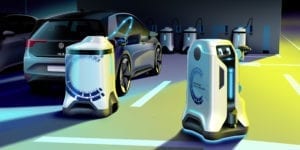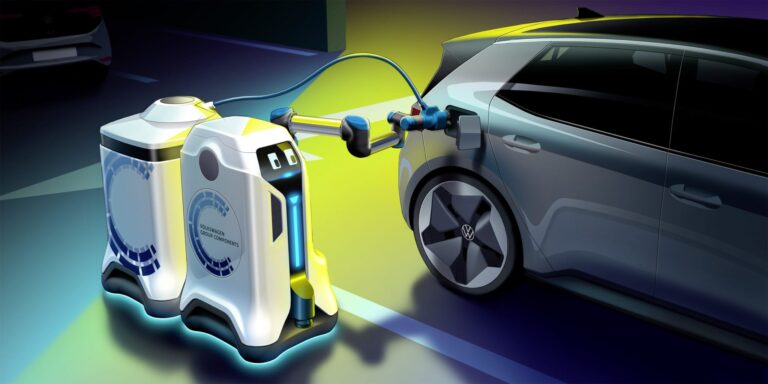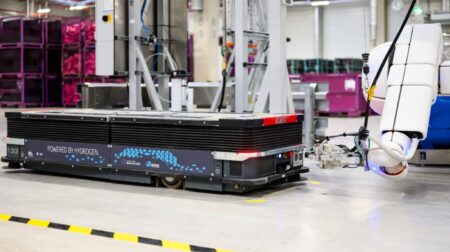Volkswagen has revealed details of a mobile charging robot prototype that drives to EVs autonomously.
Designed by Volkswagen Group Components, the mobile charging robot is started via app or V2X communication and drives itself to the vehicle that needs charging and communicates with it.
From opening the charging socket flap to connecting the plug to decoupling – the entire charging process occurs robotically and without human intervention.
Specifically, the mobile robot brings a trailer in the form of a mobile energy storage device to the vehicle and connects them; it then uses this energy storage device to charge the battery of the EV.
The mobile energy storage device stays with the vehicle during the charging process. The robot, in the meantime, charges other EVs. Once the charging service is complete, the robot collects the energy storage device and brings it back to the charging station.
Mark Möller, head of development at Volkswagen Group Components, said: “The mobile charging robot will spark a revolution when it comes to charging in different parking facilities, such as multi-storey car parks, parking spaces and underground car parks because we bring the charging infrastructure to the car and not the other way around.

“With this, we are making almost every car park electric, without any complex individual infrastructural measures. It’s a visionary prototype, which can be made into reality quite quickly, if the general conditions are right.”
When fully charged, the energy storage devices – also referred to as battery wagons – are equipped with an energy content of around 25kWh each. A charging robot can move several battery wagons at the same time.
With integrated charging electronics, the energy storage device allows for DC quick charging with up to 50kW on the vehicle.
The robot itself is fitted with cameras, laser scanners and ultrasonic sensors, which enables it to carry out the charging process autonomously, move around freely in the parking area and recognise and react to possible obstacles.

Depending on the size of the parking area or the underground car park, several charging robots can be deployed simultaneously.
“This approach has an enormous economic potential,” added Möller. “The constructional work as well as the costs for the assembly of the charging infrastructure can be reduced considerably through the use of the robots.
“Even the well-known problem of a charging station being blocked by another vehicle will no longer exist with our concept. You simply choose any parking space as usual. You can leave the rest to our electronic helper.”
A possible date for the market launch of the charging robot has yet to be set.









